We’ve covered the basics of rhythm, scales, intervals, and melodies so far. Today we’re going to talk about chords and chord progressions. What is a chord? And what chords can I use?
What is a chord?
A melody is made up of succeeding notes played one at a time, which is also called monophonic. A chord exists of multiple notes playing at the same time, also known as polyphonic. The most basic chords use only 3 notes and are called triads. All three notes of a triad are part of a scale. In the scale of C Major, this would be C, D, E, F, G, A, and B.
How to make a chord?
Just like there are Major and Minor scales there are also Major and Minor chords. Making a chord is very simple. You start by picking the bottom note, or root note of the chord. Let’s start at C. Now move up the scale, skipping one note. If we skip D we would end up at E, which is the second note of our chord, also known as the third. If we move up from E and skip the next note, F, we end up at G which is the fifth of the chord. This chord consists of C, E, and G and is called a C-Major chord.
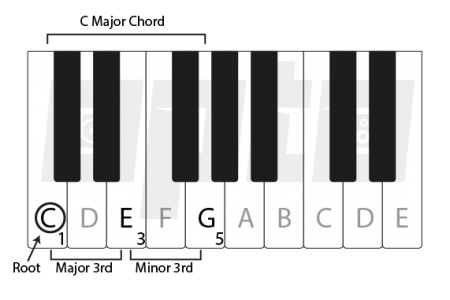
Notice that the interval between C and E has two hole steps and is therefore a Major third. The interval between E and G is a minor third. Because the Major third is at the bottom, between the root (C) and third (E), we can call this chord a Major chord.
Let’s create another chord starting on A. If we skip one note of the C major scale we end up at C, skipping B. The next note up from C would be E, skipping D. This chord consisting of A, C, and E is called an A-Minor chord.
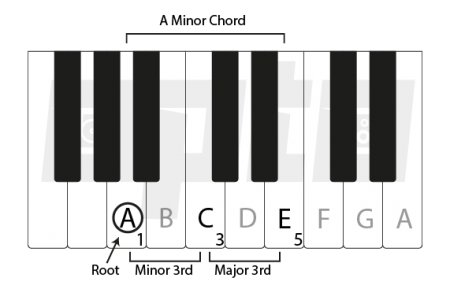
Why is it minor? Because this time the interval between the root (A) and third (C) is a minor third while the interval between C and E is a major third. The interval between the root and third thus determines if the chord is Major or Minor.
By following this pattern for the rest of the scale we would end up with the following chords:
The chords of the C Major scale
| Root | Third | Fifth | Chord | Abbreviation | Scale degree |
| C | E | G | C-Major | C | I |
| D | F | A | D-Minor | Dm | ii |
| E | G | B | E-Minor | Em | iii |
| F | A | C | F-Major | F | IV |
| G | B | D | G-Major | G | V |
| A | C | E | A-Minor | Am | vi |
| B | D | F | B-Diminished | Bdim | vii° |
Notice that the last chord of the C Major scale has a different name:
B-Diminished. By looking at the intervals we’ll see that the interval between B and D is a minor third, which would make the chord minor. But notice that the interval between D and F is also minor! This is not a regular minor chord because a regular minor chord uses a minor third at the bottom and a major third on top. Because this chord has 2 minor chords we call this a diminished chord mainly because the fifth is not a perfect fifth anymore but has been lowered by one-half step, which is called a diminished fifth or dim for short.
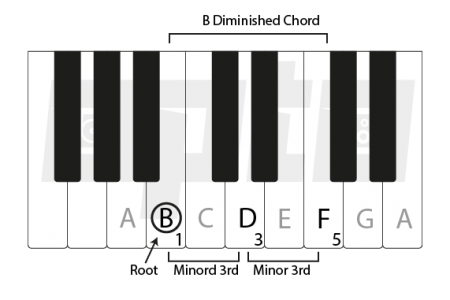
Chord progressions
Now that we know which chords to use according to our scale, we’ll have to combine some of those chords into a pattern called a chord progression. In part 5 of this series about music production for beginners, I explained that a melody is often 4 sentences long or 4 bars. Because the melody repeats every 4 bars most chord progressions follow the same pattern.
Lots of pop tunes use one chord per bar and thus 4 chords in total. This 4 chord progression is very common.

A variation to this chord progression is by using 3 chords but using the third chord on both bars 3 and 4. An example of this type of chord progression would be:
C-Major, F-Major, G-Major, G-Major.

Short hand
A shorthand way of indication chord progressions is by using roman numerals as indicated in the table above. An uppercase number is used for Major chords while a lower case number is used for minor chords. So the progression above would be indicated like this:
I, IV, V, V
The benefit of using roman numerals is that you can easily apply this pattern to other scales as well. Because the scale pattern (W-W-H-W-W-W-H) is the same for every major scale, so is the chord pattern. An ‘I’ will always be Major for every Major scale, just like the ‘IV’ and ‘V’ will always be Major and the ‘vi’ will always be minor.
Chord Functions
An important thing to realize is that every chord has a function. The root chord (I) is the home of a chord progression. The fifth chord (V) has a sense of tension, it wants to move back to the I chord. This is because the V chord starts out on a G which is the fifth of the I chord. A G-Major chord also has a B and a D which are respectively one note below and one note above the C. The B wants to move up to C, while the D wants to move down.
The V Chord
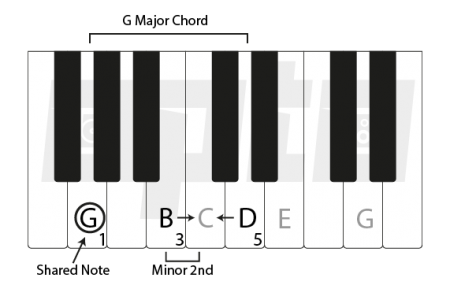
The V chord is therefore used a lot to move back home to the I chord. But why does the B wants to move up to the C? This has to do with tension and release. The interval between B and C is a minor second. When you play both B and C together you get an ugly tone called a dissonant. Because the notes are so close together they fight each other a little bit, causing tension.
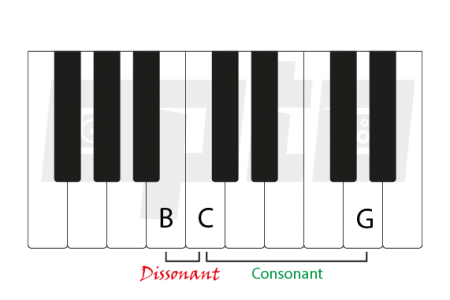
When you play the C and G together, however, this sounds pretty calming. G is part of the C-Major chord and thus both notes don’t fight each other. The relationship between C and G is called a consonant, it releases tension.
Notes close to each other have more tension than notes spaced further away. That is why the V chord wants to move back to the C because the notes are so close together.
The IV Chord
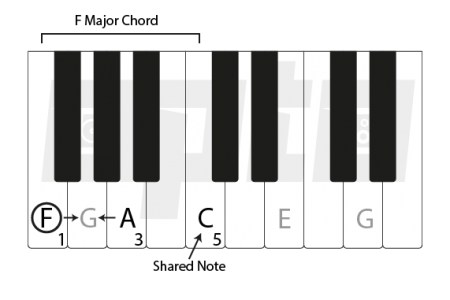
The IV chord is another chord that wants to move to the I. It has one note in common with the I chord, the C. The two other notes of F-Major, F, and A are close together to the G and want to move in that direction. The IV chord still wants to move to the I chord although the urge is less strong than the V chord.
Those three chords, the I, IV, and V are the most used chords in all kinds of music, from pop to folk, EDM to classical music. I suggest you look up some common chord progressions online and try them out in your own songs. There is no right or wrong, do what sounds best to you.





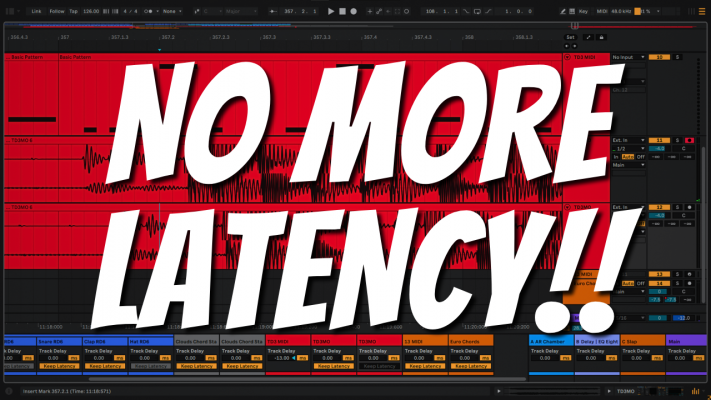
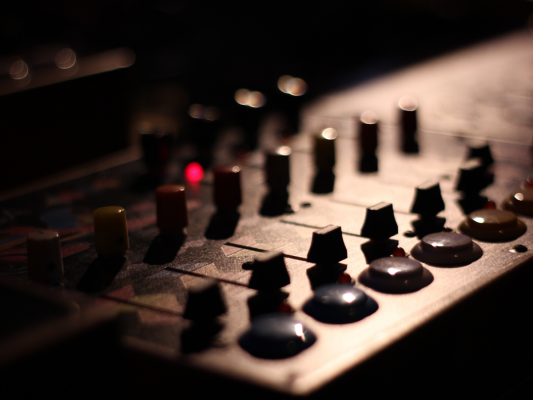
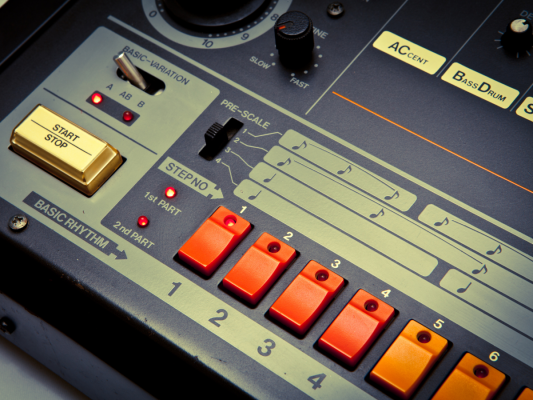
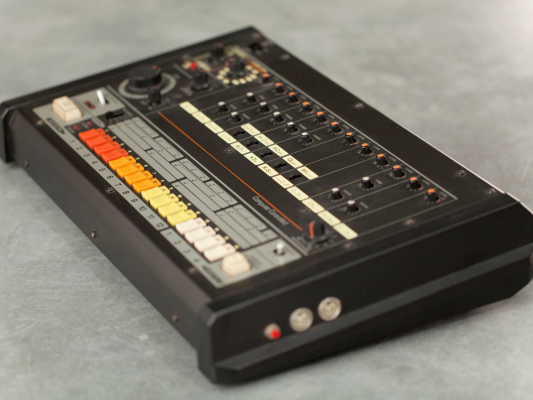




3 Responses
To figure out what your love language test is, consider the way you express affection to the people you love—whether friends, family, or romantic partners. Do you tend to cuddle with them on the couch? Or do you like to shower them with compliments and verbal affirmation?
The Love language test is a personal inventory that allows you to measure and understand how you like to give and receive love in romantic relationships. It measures a concept similar to the five love languages, which was developed in the 1990’s by psychologist and marriage counselor Dr. Gary Chapman, but with some key improvements based on Truity’s empirical research.
Human benchmark App is the perfect way to challenge and improve your cognitive skills, and it offers a variety of tests and training modes to help you do just that. With the app’s Chimp Test, you can measure your working memory and see how you stack up against others in your age group.
The goal is simple yet challenging: get the ball to the core without hitting with other balls. Strategize to Avoid Hitting Other Ball: Take a moment to observe and plan your move. A successful throw requires patience and timing, ensuring you avoid any obstacles. Core ball is a fun game.Core Ball is a science fiction miniatures board game for 2-4 players developed by Burning Games and Big Child Creatives where players will grapple, push, hack and steal their ways to victory on an ever-changing floating board.